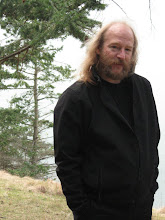The Continuous Actualization of the Enlightened Mind
Expressions of truth are actualized by the skillful
and creative application of truth via the subjective energy and volition of the
practitioner. Obviously, such skill could hardly be cultivated and developed by
turning away or detaching from the world. As a Buddhist master, Dogen
understood and taught that authentic practice-enlightenment demanded
practitioners to engage in a sustained effort to perceive and comprehend the truth in actual experience by engaging intentional, systematic training to activate, develop, cultivate,
and exercise the human capacities for perception, cognition, and critical discernment. Authentic expressions of truth,
being real dharmas, are and must be
eternal forms (i.e. real instances of existence-time). As it is the nature of
human experience to ceaselessly advance - continuously take-up and cast-off all objects of consciousness (sights, sounds, tastes, smells, tactile sensations, and thoughts) -
without a moment’s rest, expressions of truth, which
present and actualize reality, can only be executed underway, so to speak.
The
situation of this supreme truth of bodhi is
such that even the whole universe in ten directions is just a small part of the
supreme truth of bodhi: it
may be that the truth of bodhi abounds
beyond the universe. We ourselves are tools that it possesses within this
universe in ten directions. How do we know that it exists? We know it is so
because the body and the mind both appear in the universe, yet neither is
ourself. The body, already, is not “I.” Its life moves on through days and
months, and we cannot stop it even for an instant. Where have the red faces [of
our youth] gone? When we look for them, they have vanished without a trace.
When we reflect carefully, there are many things in the past that we will never
meet again. The sincere mind, too, does not stop, but goes and comes moment by
moment. Although the state of sincerity does exist, it is not something that
lingers in the vicinity of the personal self. Even so, there is something that,
in the limitlessness, establishes the [bodhi-]mind.
Once this mind is established, abandoning our former playthings we hope to hear
what we have not heard before and we seek to experience what we have not experienced
before: this is not solely of our own doing. Remember, it happens like this
because we are “people who are it.”
Shobogenzo,
Inmo, Gudo Nishijima & Mike Cross [brackets in the original]
As actual forms of existence-time, expressions of
truth (real dharmas) demonstrate the
fallacy of abstract speculation; the insubstantial nature of theoretical
doctrines is clearly exposed in direct experiential realization – the vague
“mysterious” realms and “unknown” forces suggested by mystical mumbo jumbo
simply lose all significance in the living reality of personal experience.
Expressions of truth are the transmission of prajna (enlightened wisdom) from
the whole body-mind to the whole body-mind. Where knowledge of truth is acquired by
sustained effort in study, wisdom is the gradual, organic expansion of human
normality actualized through the illumination of that truth in actual practice-enlightenment; the former is accessed
via the memory, the later is the actualized integral character of the
individual practitioner.
Please treasure yourself.
Ted




3 comments:
I notice, when I'm teaching Yoga, mostly, that there are moments when my current experience (all of which takes place within this bag of skin)conveys itself in successful communication. Information is exchanged. It sorts itself out, recognising itself. Much of the time, I'm in the way, though, making jokes, fooling, or feeling the sounds of the words fall out of my mouth like stones, sinking.
Dear Lucy,
Thank you for sharing!
As you may know, in Zen the ‘successful communication’ you seem to be speaking of is often called ‘mind to mind transmission,’ ‘Dharma-transmission,’ or simply ‘transmission.’ One of the classic koans that is often brought out to illustrate the nature of this transmission is “The Buddha Twirls a Flower.”
When Shakyamuni Buddha was at Mount Grdhrakuta, he twirled a flower before his assembly.
Everyone remained silent.
Only Mahakashyapa smiled (broke into a smile, or ‘cracked his face’).
The Buddha said, "I have the True Dharma-Eye, the Marvelous Mind of Nirvana, the True Form of No-Form, the Subtle Gate of the Dharma that transcends words and teachings. This has now been entrusted to Mahakashyapa."
A truly ‘successful communication’ indeed! The Buddha’s ‘twirling a flower’ was such a loud expression it continues to be heard all over the globe. So too, the thundering truth communicated by Mahakashyapa’s smile – it is so clear I cannot help but smile whenever I encounter it.
It is worth noting also that while the twirling flower and the smiling were ostensibly ‘silent’ or ‘nonverbal’ expressions – the majority of those that have actually encountered them did so only by means of the communication capacity of written words – as in the present instance for example.
Also, it seems as ‘only Mahakashyapa smiled’ while everyone else ‘remained silent’ the Buddha went on to say, “I have the…” Clearly, even if ‘everyone’ did not understand the twirling flower, or did not even understand that they themselves made a loud and clear expression (i.e. their ‘remaining silent’) it seems to have nevertheless been ‘successfully communicated’ to the Buddha – hence his apt response.
Perhaps, then, even when we are ‘in the way’ and unable to see our own expressions as ‘successful communication’ the truth of the here-now continues to be transmitted directly, rising clear and distinct, rather than sinking like stones…
Again, thank you for sharing. I look forward to your future expressions.
Twirl, smile, breathe!
Ted
Post a Comment